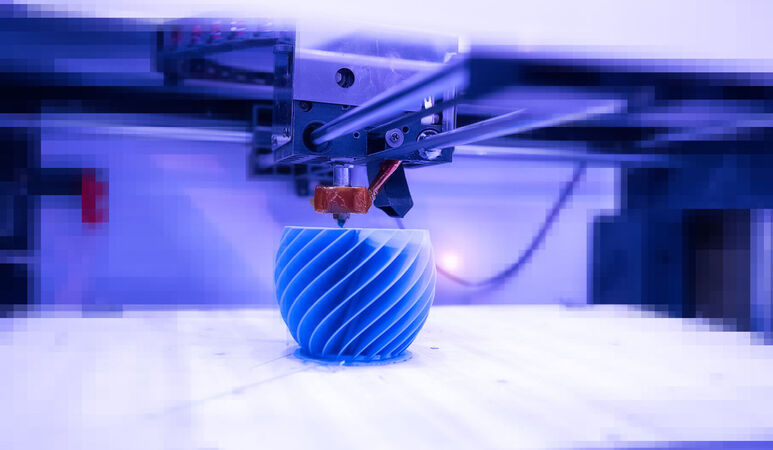What is commonly called 3D printing is additive manufacturing in research. It is today already possible to print almost every object on a suitable 3D printer. Be it a cell phone skin, a vase for flowers or a small spare part for a coffeemaker – possibilities are abundant, but in technological terms it is still early day, especially for end consumers.
Especially in the industrial context, additive manufacturing technologies have already reached a high level of maturity in many fields of application and are becoming increasingly important.
Additive manufacturing has particular strengths in single-piece or spare parts manufacturing. Complex reprogramming of production machines is no longer necessary. All that is needed to print an object is to create a model using a CAD program. This reduces product development efforts and production time significantly. Additive manufacturing is thus a cost and resource saving way of manufacturing individual and customised products.
If, for instance, spare parts are phased out or if a customer needs a very special, custom component, 3D printing can quickly offer a solution. Even complex geometries, such as free forms or hollow spaces, are possible with 3D printing because additive manufacturing enables complex geometries and internal structures to be made on the basis of a layered approach. The printer prints layer by layer until the object is complete. Another advantage is the large diversity of materials because a wide range of materials is available for manufacturing.
Additive manufacturing processes are also particularly suitable for manufacturing models or presentation objects, ranging from foundry models to presentation models for crafts businesses and service providers. Additive manufacturing methods are, however, less suitable for large series production because they offer no financial or time-related advantages when compared to conventional series production.
The range of possible applications of additive manufacturing is by no means exhausted and is so far under-represented, especially at small and medium-sized enterprises,. Mechanical engineering is the only field where the technology has already been successfully used for some time. Lightweight components for vehicles or for aerospace applications as well as for sanitary installations are now printed.
Opticians have also recently discovered this innovative technology for their business. Spectacle frames can be precisely tailored to the shape of the wear’s head as well as to the distance between the eyes and ears. Applications in the medical devices sector are still less common. Examples in this field include customised orthopaedic insoles or prostheses adapted to the patients’ specific conditions. Earpieces for hearing aids can also be quickly manufactured in this way and offer wearers increased comfort thanks to their precise fit. Even biological material can today be 3D printed in order to manufacture blood vessels and small organs, for example.
